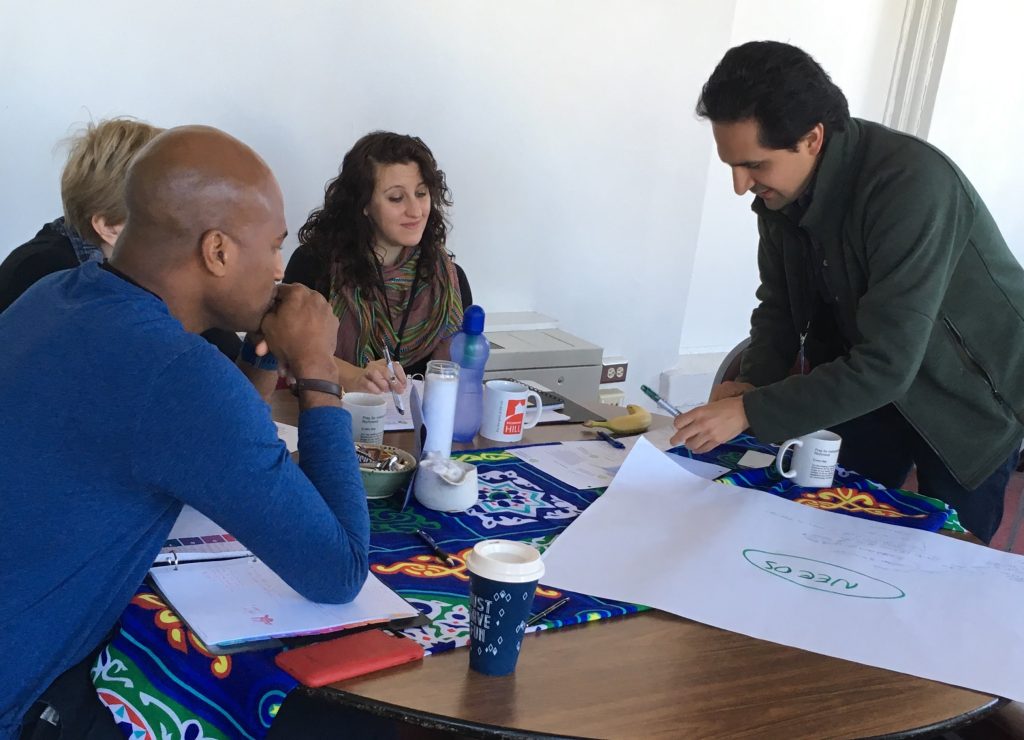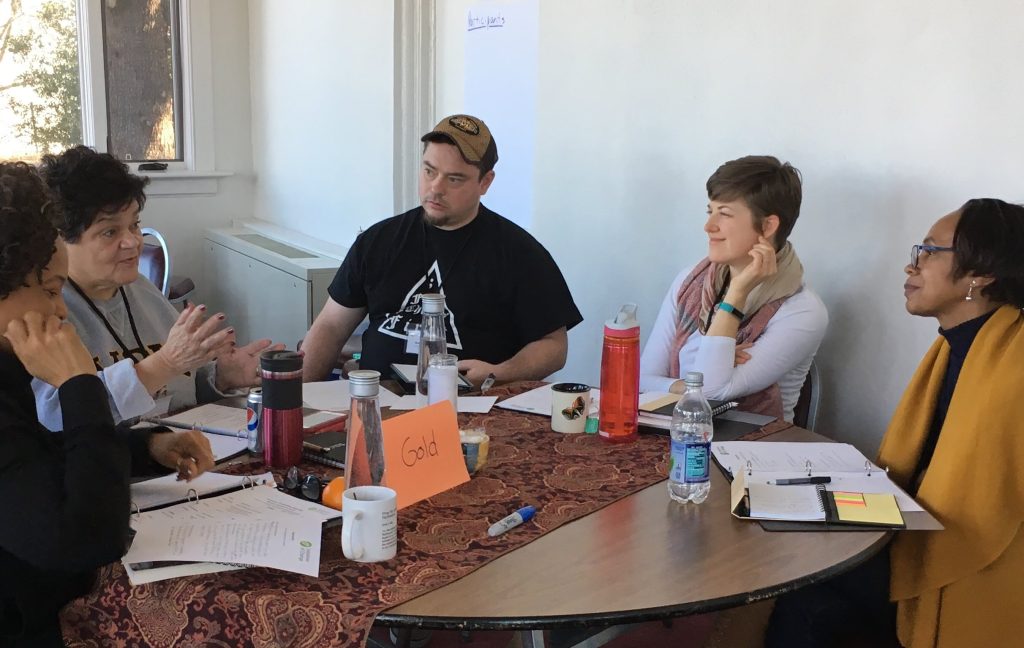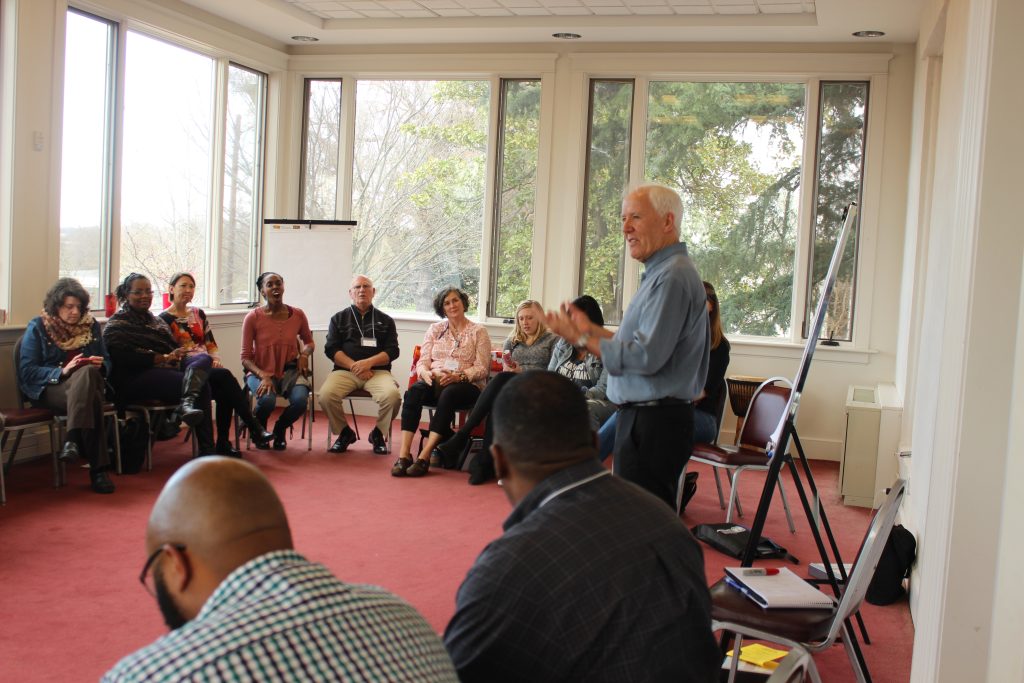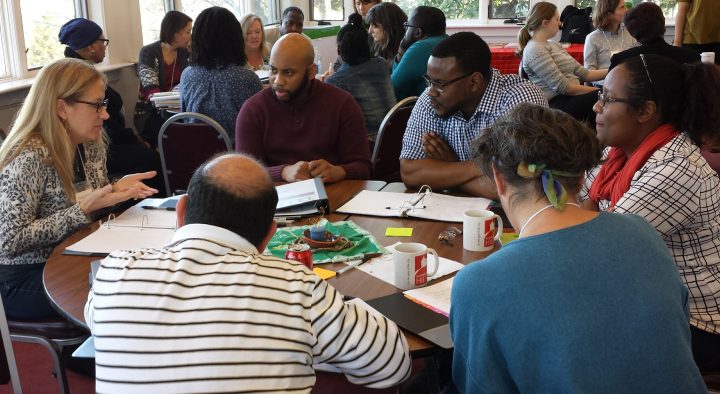In 2001, the University of Michigan published Intergroup Dialogue: Deliberative Democracy in School, College, Community and Workplace. With case studies edited by David Schoem and Sylvia Hurtado it offered one of the most comprehensive reviews of the role of dialogue as an essential tool for healthy democracies.
A chapter by Karen Elliott Greisdorf describes the early formation of the Initiatives of Change program Hope in the Cities in Richmond, VA, its approach to “honest conversation” and its six-series dialogue format. She quotes Hope in the Cities leaders that the goal is to create spaces where “isolated people become connected and involved; the frustrated or disillusioned find hope; and the alienated see those on the opposite side in a new light.”
As Mayor of Richmond, Walter T Kenney, led the groundbreaking 1993 walk through the city’s racial history. The following year he told an audience in Brooklyn Town Hall that this approach to dialogue offers a process for “moving past and not getting stuck in the blame game…The mentality of victimhood or guilt-ridden shame anchors us in inaction. Hope in the Cities provides the arena for unselfish leadership and partnership for building trust and hope.”
Honest, inclusive dialogue is one of the four principles employed by teams in at least a dozen countries with Initiatives of Change International’s Trustbuilding program. As I write in Trustbuilding, An Honest Conversation on Race, Reconciliation, and Responsibility, true dialogue, or honest conversation, “is more than a tool with which to exchange information. It can lead to transformation in individuals, in relationships, and–if sustained–to change in society. It moves us to action because it touches us at our deepest point of motivation. When we experience dialogue at this level we respond and behave differently. We relate to other people differently and choose different priorities in our lives. Our friendships, our interests, and our world view are all deeply affected.”


Twelve ingredients for good dialogue
So how do we create conditions for such a dialogue? How do we prepare facilitators to create the space where truly honest conversation can occur? Here are some things to keep in mind in preparing and facilitating dialogue that we teach in the Trustbuilding program. I have framed them as twelve ingredients for good dialogue.
Participation: Who is the dialogue for? Who needs to be at the table in order for it to be effective? If the dialogue is designed to address a divisive social issue, who are the key stakeholders whose voices need to be heard?
Invitation: How will we invite individuals to join the dialogue? How will we make them feel welcome and that their contribution will be valued? If some key stakeholders are hard to reach, we may need to find allies who they trust.
Location: The physical space in which the dialogue takes place is important. It should be an environment where people feel comfortable. Food can be very helpful in creating a sense of welcome and hospitality. It’s amazing how people will engage in conversation over a meal in ways that they might not do otherwise.
Destination: The first conversation focuses on purpose. Why are we here? What do we hope to achieve? It’s essential that participants maintain a sense of purpose and ownership, otherwise they are unlikely to stay around when the going gets tough.
Formation: The second task is to form a container that will hold the space for a productive dialogue. The facilitator asks the participants to identity: What do they need from themselves? What do they need from others? What do they need from the facilitator? Once they have answered these questions, the group must be responsible to hold itself accountable.
Exploration: Dialogue is a journey of exploration. Although we may have a sense of purpose, we don’t know how we will reach our destination. Facilitators leave their own opinions at the door. We say that a good dialogue question does not presume a right answer; it’s not judgemental; it elicits personal storytelling; and it sheds light on the underlying issues. As the dialogue proceeds, the facilitator encourages participants to move beyond their “comfort zone” or the status quo to the “learning zone.” My colleague Cricket White told Karen Elliott, “I think one of the reasons people are ready to move forward beyond their own comfort zones is because we [the facilitators] are willing to do that with them, as fellow travelers…We are willing to be vulnerable and to open ourselves to the same scrutiny as everyone else.”
Observation: A key role of the facilitator is to observe the dynamics of the group. Is everyone participating? Are some people dominating? Are others keeping silent? Observe the body language. What central themes are emerging? Get to the balcony and observe the dance floor.
Interpretation: The facilitator tries to make sense of what he or she is observing and hearing – both what is said and what is not being said.
Intervention: At some point the facilitator may need to decide whether and how to intervene while still keeping ownership in the hands of the group.
Duration: The best dialogues continue over several sessions. Dialogue is a process, and participants need time to move through that process. Phases of a dialogue may include: What are our personal experiences in relation to the issue? How do we see this playing out in the wider community and what are the historical roots? Is there a place for apology, forgiveness, repair? What hopes or vision do we have for the future? What personal commitments will we make?
Celebration: At the conclusion of the dialogue, celebrate what has been achieved. The relationships built, the new insights gained.
Evaluation: Some form of evaluation is helpful. What were the initial goals? To what extent did the dialogue reach those goals? There are useful tools available to help with this. However, as Harold Saunders, the International Institute for Sustained Dialogue who played a pivotal role in the Camp David Accords, says, anyone who has engaged in dialogue work lies awake at night asking, “What does this add up to?” He warned against relying on “numerical, objective, hard-results statement, a bottom-line answer” that some institutions demand. “I don’t know of a single social change program that lends itself to that kind of evaluation. We are engaged in a process of change the likes of which are not too familiar to people who use conventional social science paradigm for understanding and judging.”

Sometimes it’s necessary for opposing groups to have their own internal dialogue before they can talk productively with the other side. Cricket White says that the most powerful moment occurs when someone takes responsibility for what their group has done to create or perpetuate the problem and can claim this in front of the other group. “It changes the whole dynamic because the other side knows already. It’s not news to them!”
As I write in Trustbuilding, “Insight, new relationships, and commitment to action: these are fruits of good dialogue. Such dialogues create space where people feel able to express their deepest emotions, listen carefully, and find the courage to shine a spotlight on their own responsibility for change instead of accusing others.”
In training facilitators, we don’t just aim to create experts but to develop leaders who will maintain relationships and sustain the process. “There are no quick fixes on the road to building trust. This cannot be done on the cheap and it will not be comfortable. But the needs of our communities are too urgent to allow historic wounds and fear to continue to divide us. We need honest conversation.”
Notes: All quotes are drawn from Trustbuilding, An Honest Conversation on Race, Reconciliation, and Responsibility, University of Virginia Press 2010, 2017, and Intergroup Dialogue: Deliberative Democracy in School, College, Community and Workplace, University of Michigan 2001, and “A Conversation with Harold Saunders,” Carnegie Reporter, Fall 2005.
